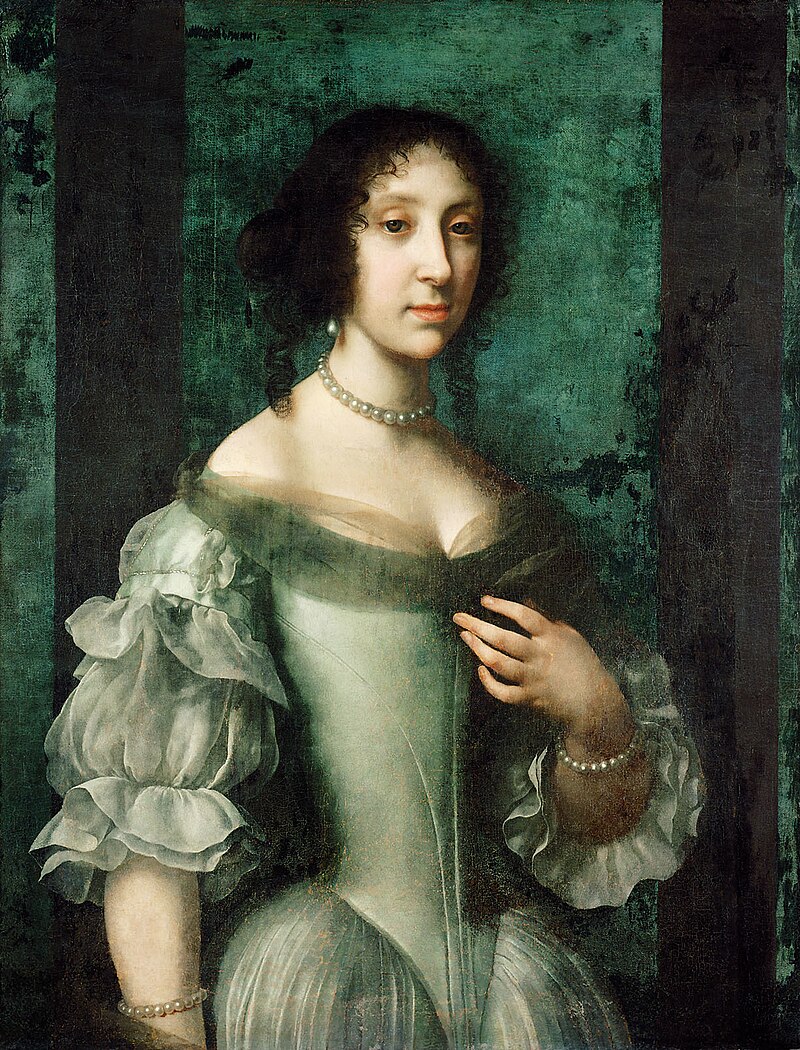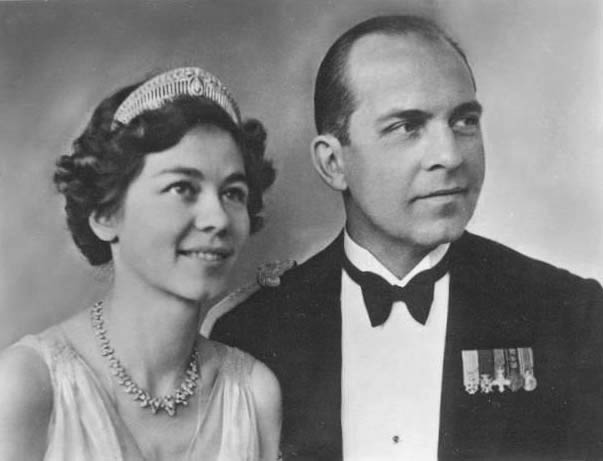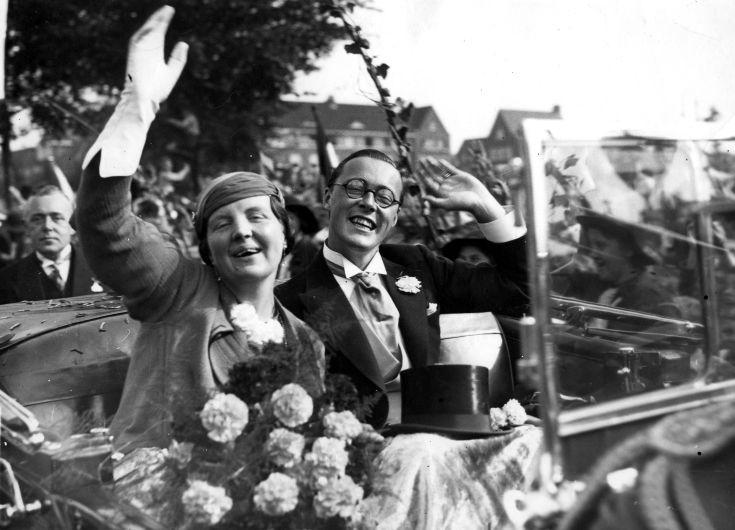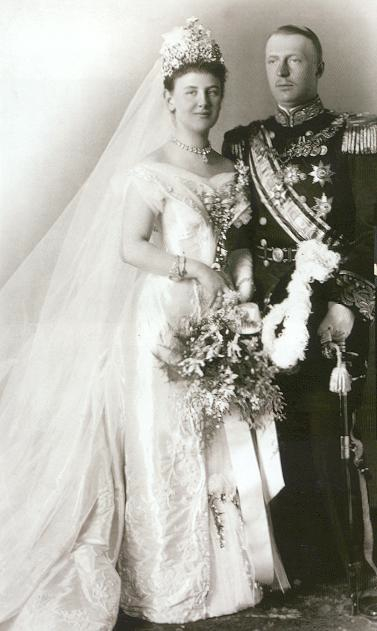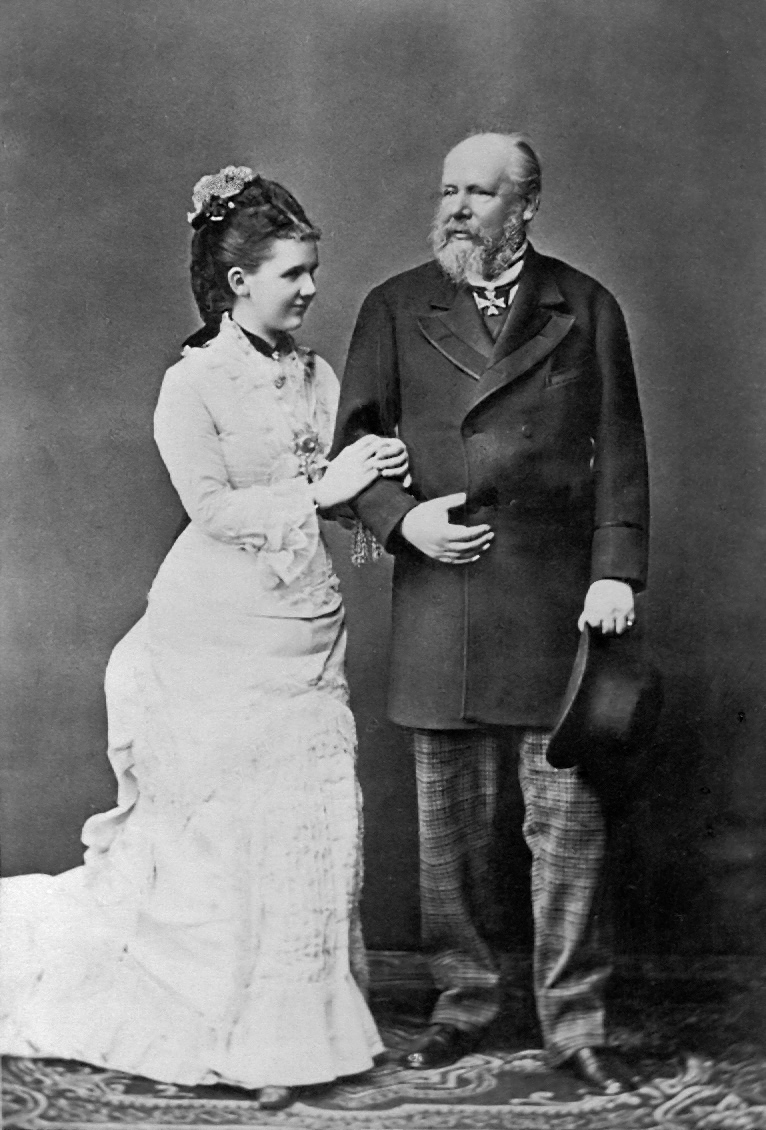by Susan Flantzer
© Unofficial Royalty 2023
Principality of Lippe: Originally called Lippe-Detmold, the Principality of Lippe came into existence in 1789 when it was raised from a County within the Holy Roman Empire to a Principality. Leopold I, Count of Lippe-Detmold became the first Prince of Lippe.
At the end of World War I, Leopold IV, the last Prince of Lippe, was forced to abdicate on November 12, 1918. However, Leopold negotiated a treaty with the new government that allowed his family to remain in Lippe. Today the territory that encompassed the Principality of Lippe is located in the German state of North Rhine-Westphalia.
*********************

Bertha Louise of Hesse-Philippsthal-Barchfeld, Princess of Lippe; Credit – Wikipedia
Princess Bertha Louise of Hesse-Philippsthal-Barchfeld was the first of the two wives of Leopold IV, the last Prince of Lippe. Born on October 25, 1874, in Burgsteinfurt, a city under the control of the noble Bentheim-Steinfurt family, now in the German state of North Rhine-Westphalia, Bertha Louise was the eldest of the four children and the only daughter of Wilhelm, Landgrave of Hesse-Philippsthal-Barchfeld, a rear admiral in the Prussian and German Imperial Navy, and his second wife Princess Juliane of Bentheim-Steinfurt.
Bertha Louise had three younger brothers but two died in infancy:
- Chlodwig, Landgrave of Hesse-Philippsthal-Barchfeld (1876 – 1954), married Karoline of Solms-Hohensolms-Lich, had five children
- Prince Eduard of Hesse-Philippsthal-Barchfeld (1878 – 1879), twin of Julian, died in infancy
- Prince Julian of Hesse-Philippsthal-Barchfeld (born and died 1878), twin of Eduard, died in infancy
When Bertha Louise was three-and-half years old, her mother Juliane, age thirty-six, died eight days after giving birth to twin boys, probably from childbirth complications. The twin boys both died before their first birthday.
Bertha Louise had five half-siblings from his father’s first marriage to Princess Maria von Hanau und zu Hořowitz which ended in divorce. Maria was the daughter of Elector Friedrich Wilhelm I of Hesse-Kassel and his morganatic wife Gertrude Falkenstein, later Countess of Schaumburg and Princess of Hanau und zu Hořowitz. Maria took her title from her mother and because of her parents’ morganatic marriage, her children were not given the title Prince/Princes of Hessen-Philippsthal but rather Prince/Princess of Ardeck, and they did not have succession rights.
- Prince Friedrich of Ardeck (1858 – 1902), married Anne Hollingsworth Price, no children
- Prince Carl of Ardeck (1861 – 1938), married Anne Elise Strehlow, no children
- Princess Elisabeth of Ardeck (1864 – 1919), married Count Ferdinand of Ysenburg-Büdingen-Philippseich, had four children
- Princess Marie of Ardeck (1867 – 1868), died in infancy
- Princess Luise of Ardeck (1868 – 1959), married Prince Rudolf of Lippe-Biesterfeld, had three children
Bertha Louise’s father married for a third time in 1879 to Princess Adelheid of Bentheim and Steinfurt, the sister of his second wife, but the marriage was childless and Adelheid died in 1880. In 1884, Bertha Louise got another stepmother when her father married Princess Auguste of Schleswig-Holstein-Sonderburg-Glücksburg, the daughter of Friedrich, Duke of Schleswig-Holstein-Sonderburg-Glücksburg and Princess Adelheid of Schaumburg-Lippe. Bertha Louise had one half-brother from this marriage.
- Prince Christian of Hessen-Philippsthal (1887 – 1971), married (1) Elizabeth Reid Rogers, had four children (2) Anne Pearl Everett, no children

Bertha Louise’s husband Leopold IV, Prince of Lippe; Credit – Wikipedia
On August 16, 1901, in Rotenburg an der Fulda, Kingdom of Prussia, now in the German state of Hesse, Bertha Louise married the future Leopold IV, Prince of Lippe, the son of Ernst, Count of Lippe-Biesterfeld and Countess Karoline Friederike Cecilia of Wartensleben. Leopold’s father Ernst was the head of the non-reigning Lippe-Biesterfeld line of the House of Lippe, the most senior line of the princely house after the reigning Lippe-Detmold line.

Bertha Louise and Leopold with their three eldest children; Credit – Wikipedia
Bertha Louise and Leopold had five children:
- Ernst, Hereditary Prince of Lippe (link in German) (1902 – 1987), married (1) Charlotte Ricken, divorced (2) Herta-Elise Weiland, had one son and one daughter
- Prince Leopold Bernhard of Lippe (1904 – 1965), unmarried
- Princess Karoline of Lippe (1905 – 2001), married Count Hans of Kanitz, had six daughters
- Prince Chlodwig of Lippe (1909 – 2000), married Veronika Holl, had one daughter
- Princess Sieglinde of Lippe (1915 – 2008), married Friedrich Carl Heldman, had two daughters and one son
Leopold’s father Ernst, Count of Lippe-Biesterfeld served as the Regent of the Principality of Lippe for Alexander, Prince of Lippe. Alexander had been declared mentally incapacitated and therefore, incapable of governing, a regency would be necessary during Alexander’s reign. When Leopold’s father died on September 26, 1904, Leopold succeeded him as Regent of the Principality of Lippe. Four months later, Alexander, Prince of Lippe, the last of the Lippe-Detmold line, died on January 13, 1905. With the extinction of the Lippe-Detmold line, the throne of the Principality of Lippe went to Count Leopold of Lippe-Biesterfeld who reigned as Leopold IV and would be the last reigning Prince of Lippe.

Christ Church in Detmold, which Leopold IV built and where he is buried with his two wives; Christ Church in Detmold; Credit – Von Daniel Brockpähler – Eigene Fotografie, bearbeitet mit Photoshop von Nikater, CC BY-SA 3.0, https://commons.wikimedia.org/w/index.php?curid=8648403
Following the German Empire’s defeat in World War I and the German Revolution of 1918-1919, Leopold IV was forced to renounce the throne on November 12, 1918, by the Lippe People’s and Soldiers’ Council. However, Leopold negotiated a treaty with the new government allowing his family to remain in Lippe. Three months later, on February 19, 1919, Bertha Louise died, aged 44, in Detmold, then in the new Weimar Republic, now in the German state of North Rhine-Westphalia. She was buried at the Christ Church in Detmold (link in German). Leopold married for a second time to Princess Anna of Ysenburg and Büdingen and they had one son Armin, Prince of Lippe.

Bertha and Leopold’s son Ernst, Hereditary Prince of Lippe as a witness during the Nuremberg Trials; Credit – Wikipedia
During the rise of Nazism in Germany, all three sons of Bertha Louise and Leopold became members of the Nazi Party. Their eldest son Hereditary Prince Ernst is reported to have been the first German prince to join the Nazi Party when he signed up in May 1928. Ernst’s brother Chlodwig joined the Nazi Party in 1931 and the third brother Leopold Bernhard joined in 1932. Hereditary Prince Ernst later became an SS-Major (Schutzstaffel Sturmbannführer) and held a high-ranking post in the SS Race and Settlement Main Office. The SS (Schutzstaffel) was the agency of security, surveillance, and terror in Nazi Germany and German-occupied Europe. The SS Race and Settlement Main Office was responsible for safeguarding the racial purity of the SS within Nazi Germany. At the end of World War II, Hereditary Prince Ernst was taken prisoner by the Allies and took part in the Nuremberg Trials as a witness. The denazification tribunal in the Detmold administrative district classified Ernst as a Lesser Offender, Category III. He was not imprisoned but rather placed on probation with a list of restrictions.
In addition to being pro-Nazi, both Hereditary Prince Ernst and Prince Khlodwig had made unequal marriages. Due to these circumstances, when their father Leopold rewrote his will in 1947, he indicated that Armin, his only child with his second wife, would succeed him as the Head of the House of Lippe and become the administrator of the princely family’s properties such as the Residenzschloss Detmold (link in German), thereby disinheriting all three of his sons from his first marriage.
Leopold IV, Prince of Lippe, survived his first wife Bertha Louise by thirty years, dying, aged 78, on December 30, 1949, in Detmold, North Rhine-Westphalia, Germany. He was buried with Bertha Louise at the Christ Church in Detmold (link in German). Leopold’s second wife Anna survived him by thirty-one years, dying on February 8, 1980, in Detmold at the age of 94, and was also buried at Christ Church.
This article is the intellectual property of Unofficial Royalty and is NOT TO BE COPIED, EDITED, OR POSTED IN ANY FORM ON ANOTHER WEBSITE under any circumstances. It is permissible to use a link that directs to Unofficial Royalty.
Works Cited
- Bertha Louise von Hessen-Philippsthal-Barchfeld (2023) Wikipedia (German). Available at: https://de.wikipedia.org/wiki/Bertha_Louise_von_Hessen-Philippsthal-Barchfeld (Accessed: 13 July 2023).
- Flantzer, Susan. (2020) Leopold IV, Prince of Lippe, Unofficial Royalty. Available at: https://www.unofficialroyalty.com/leopold-iv-prince-of-lippe/ (Accessed: 13 July 2023).
- Petropoulos, Jonathan, 2009. Royals And The Reich. Oxford: Oxford University Press.
- Prince William of Hesse-Philippsthal-Barchfeld (2023) Wikipedia. Available at: https://en.wikipedia.org/wiki/Prince_William_of_Hesse-Philippsthal-Barchfeld (Accessed: 13 July 2023).
- Wilhelm Prinz von Hessen-Philippsthal-Barchfeld (2022) geni_family_tree. Available at: https://www.geni.com/people/Wilhelm-Prinz-von-Hessen-Philippsthal-Barchfeld/6000000002188424816 (Accessed: 13 July 2023).








